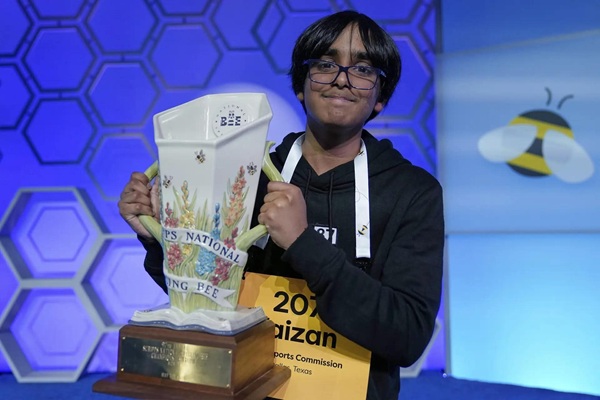A program scientist at NASA headquarters in Washington, D.C., Hashima Hasan has been involved in more than a dozen missions.
Bhargavi Kulkarni
SIMILAR to NASA’s recent space missions, an Indian American played a pivotal role in the Dec. 25 launch of the James Webb Space Telescope. Hashima Hasan, Deputy Program Scientist for the James Webb Space Telescope, was part of the team on board when the world’s largest and most powerful telescope was launched on Christmas from the European spaceport of Kourou in French Guiana.
A program scientist at NASA headquarters in Washington, D.C., Hasan has been involved in more than a dozen missions. In her role, she makes sure that each project’s mission remains possible and true to NASA strategic objectives. Additionally, she serves as the Education and Communication Lead for Astrophysics and as the executive secretary of the Astrophysics Advisory Committee.
In an interview with the ‘Women at NASA’ series and NASA STEM Stars, Hasan said her fascination with space science began when she watched the Sputnik launch from her hometown in Lucknow in 1957. “I was a little girl back then, but the spectacular satellite launch made me eager to follow every success and failure in the newspaper. I clearly remember the day man landed on the moon.”
It was then that she began dreaming about becoming a scientist. “Growing up in India, newly liberated from British rule, and at a time when there were few women scientist role models, I still dreamed of being one,” she writes in a NASA blog. “When the Russians launched Sputnik and my grandmother gathered the whole family early one morning to see the satellite pass overhead, I wanted nothing more than to explore space,” she continues. “When NASA landed a man on the moon, I promised myself that one day I would work for NASA.”
She said that the years she spent at Aligarh Muslim University helped her attain a scholarship to further pursue higher studies in Nuclear Science at the University of Oxford. After earning her doctorate at Oxford, she returned to India and joined the Tata Institute for Fundamental Research as a research scientist and one of the two female physicists. A year later, she was selected for the faculty of Poona University.
However, Hasan’s route to NASA was an unusual one. “Although I was financially independent and on a solid career path, I was under tremendous pressure from my family to get married,” she writes. “When my father brought the man who became my husband, we had two hours at the Taj Hotel in Bombay to meet and let my father know our decision,” She had to leave “a promising career in India” and come with her husband to the US, “where immigration visa restrictions closed many doors for me.” But Hasan was determined not to give up her science career. “I continued my research on a limited basis until we received permission to stay in America. It was sheer willpower that helped me keep my scientific abilities alive.”
Hasan’s connection with NASA started in 1985 when she began working at the Space Telescope Science Institute in Baltimore, Maryland. At the time, she was a mother of two toddler sons and had to juggle her time between home and work. She joined NASA in 1994 as a Visiting Senior Scientist. “Although it was a two-year job, I found working at NASA Headquarters so exhilarating and rewarding that I stayed on,” she said, adding that NASA’s space science program gave her “the opportunity to lead cutting edge science, work with world-class scientists and write research papers on astronomy.” Since then she has been the Program Scientist for twelve flight missions, twice for the Explorer Program, and lead for the Astrophysics Research and Analysis Program.





0 Comments